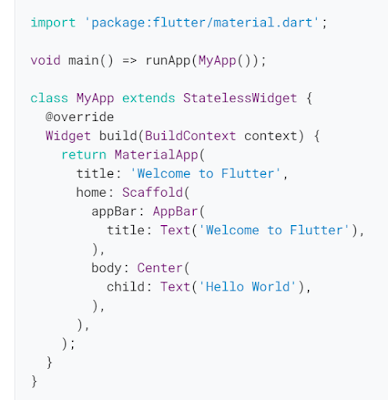12 Reasons to choose Flutter as your Development Environment
1. Flutter overcomes the traditional limitations of cross-platform approaches.
Creating a truly cross-platform approach has long been the bane of tech consultants tired of having to make multiple versions of identical product. However, in reality, the user experience typically lags behind that of native applications, because you often end up building the UI experience in JavaScript that has to be Just In Time compiled.
2. Developers increase productivity ten-fold.
This increase in productivity comes from Flutter’s “hot reload” “Stateful Hot Reload” and “Hot Restart”. Together, these allow developers to see changes they make to the state of an app in less than one second; and changes to the app structure in less than ten.
3. Frontend & Backend with a single code
Unlike in Android coding, where there are separate files for fronted (Views) which are referenced by backend (Java), flutter uses a single language (Dart) which does both the job and uses a reactive framework.
4. It’s a powerful design experience out of the box.
Due to the Flutter team’s careful implementation of the Material design specification, it’s easy to create powerful UI experiences right out of the box. It helps produce the smooth, crisp experience you typically only see with native applications because Flutter’s release build is a native application.
5. There is an extensive catalog of open source packages.
The large set of open source packages available helps you create apps faster, with ease, and there are a lot of packages current available which make many complicated tasks much easier. Although still relatively young, the package library is growing by leaps and bounds every day thanks to an ever growing population of developers actively contributing to Flutter.
6. Straightforward integration with Firebase.
Firebase provides out of the box support for a collection of services such as cloud storage, cloud functions, real time databases, hosting, authentication and a whole lot more. Your infrastructure is instantly serverless, redundant and scalable.
7. Flutter has support for a variety of IDEs.
When coding with Flutter you can choose from a number of Integrated Development Environments. At first I started off with Android Studio, but then I saw Flutter Live where they were using VS Code. That got me wondering, and I found that a lot of Flutter developers use Visual Code.VS Code is light weight and much faster, and has most the features available in Android Studio and IntelliJ. You don’t need to switch in order to start working in Flutter.
8. UI Compliance — Everything is a Widget.
In flutter everything is a widget, the Appbar, Drawer, Snackbar, Scaffold, etc. It’s easy to wrap one Widget inside another to give this to do things like center something, by wrapping it in a Center Widget.
9.Different themes for Android/iOS
Assigning the proper theme for a user’s platform is as easy as using a ternary if to check which platform the user is running on; allowing your UI to make run time decisions about which UI components to use.
10. Continuous integration using Code Magic.
Code magic is easy to learn and completely free! It’s a highly sophisticated CI tool, optimized specifically for Flutter. Code magic makes build processes seamless.
11. Animations are even easier using 2Dimensions Flare.
This amazing online tool can be used to create extraordinary UI or animations with ease. It bridges the gap between the UI designer and the developer, reducing the time required to apply UI
12. Flutter on desktop and the web.
Everyone was stunned by the revelation that the Flutter team now has prototype Flutter apps working in a web browser.

It is really informative and helpful too
ReplyDeleteThank you😊
DeleteNice your BLOG.
ReplyDeleteThanks😉
Delete